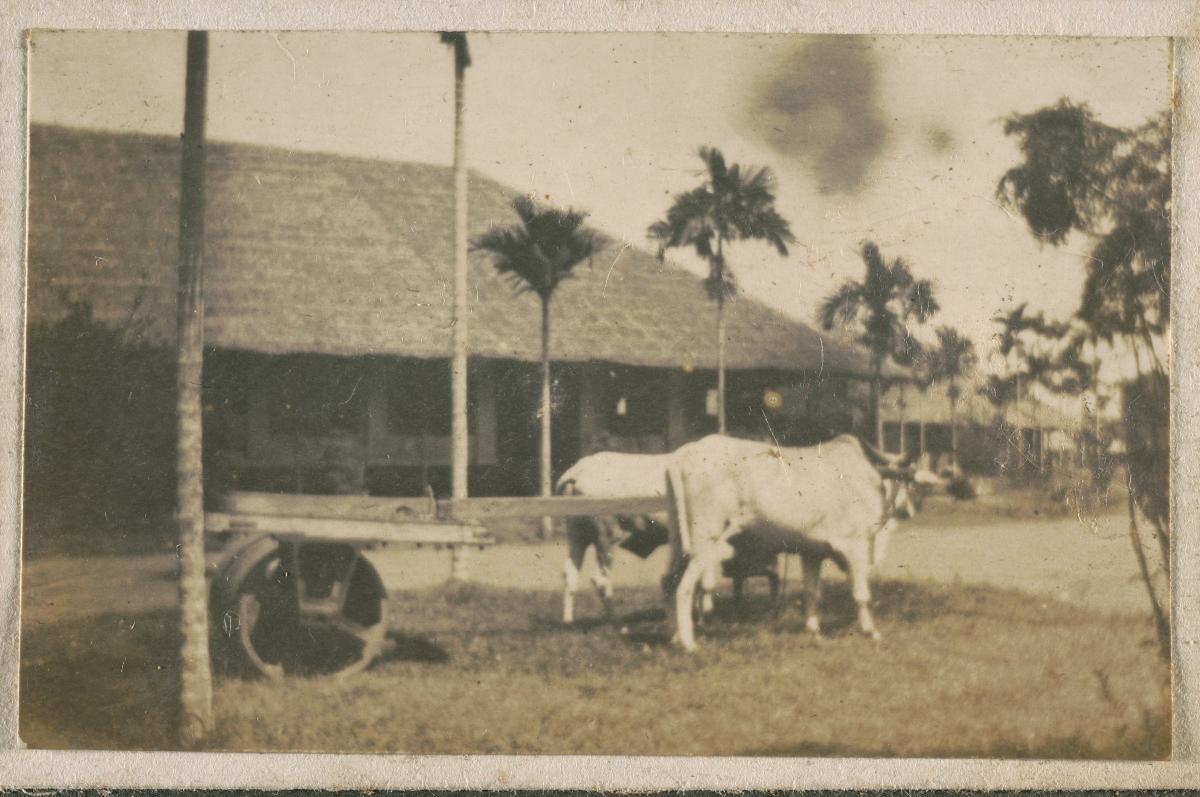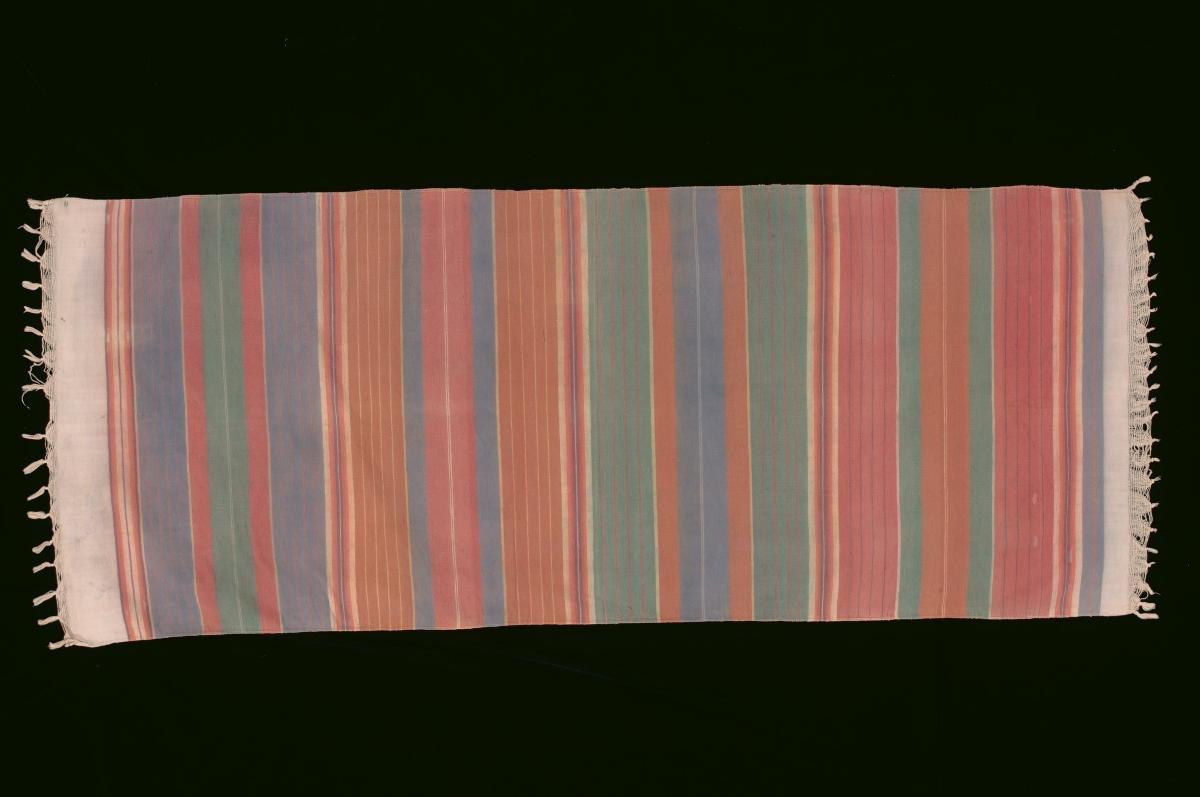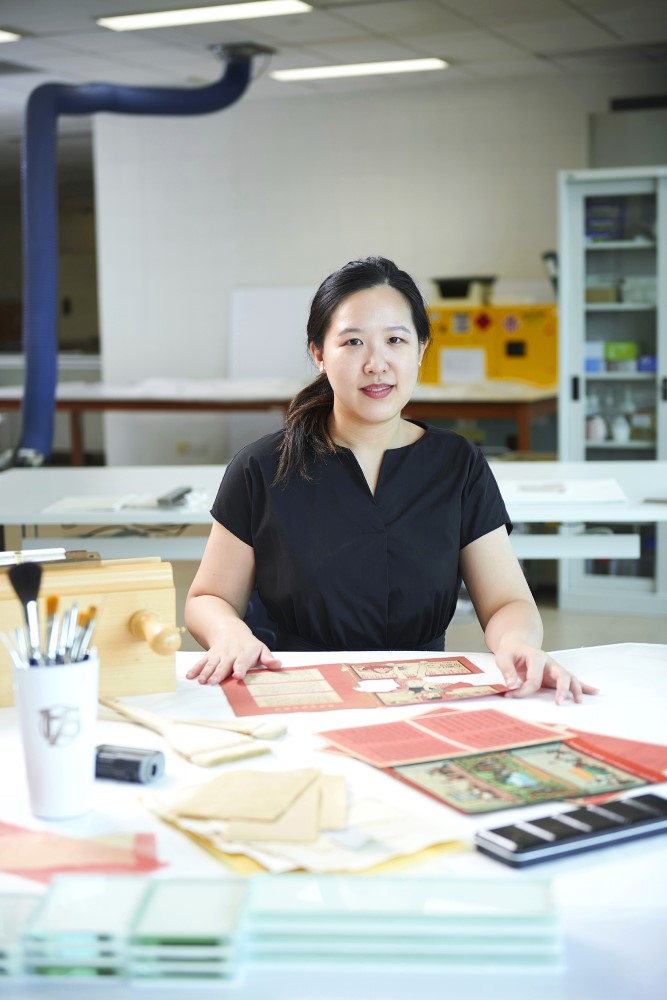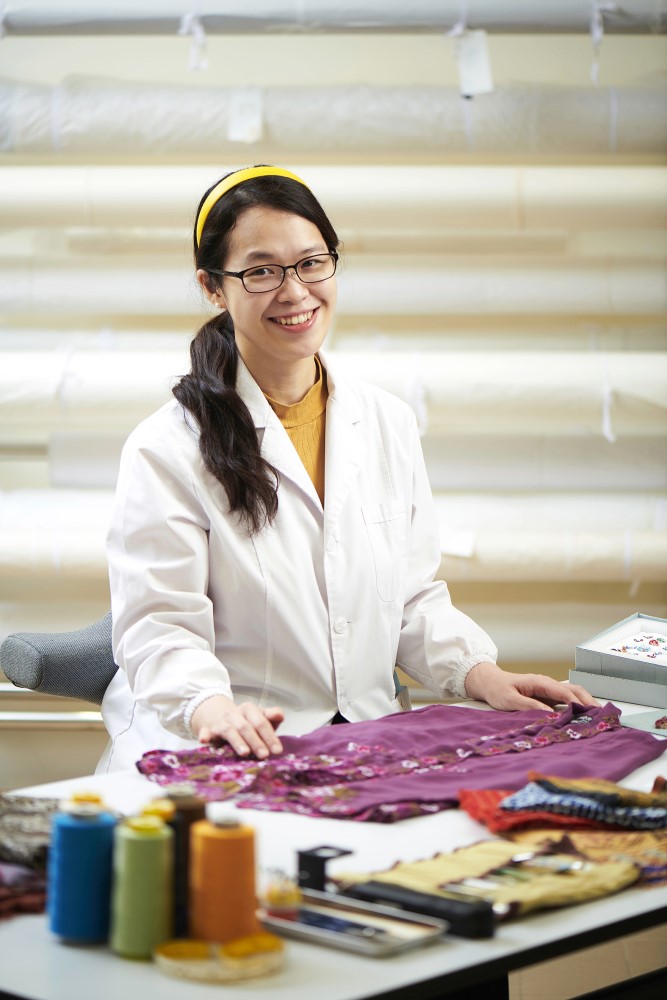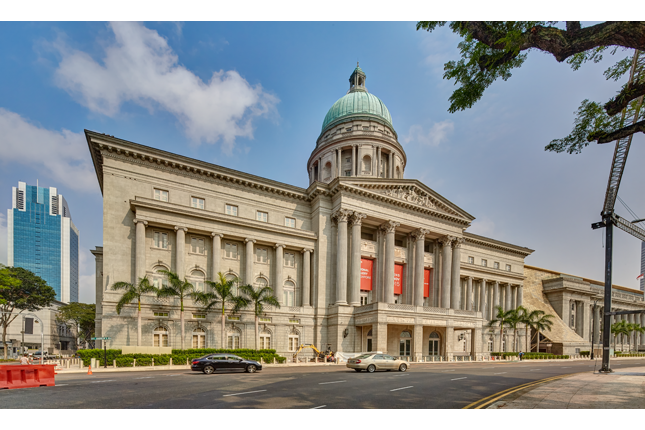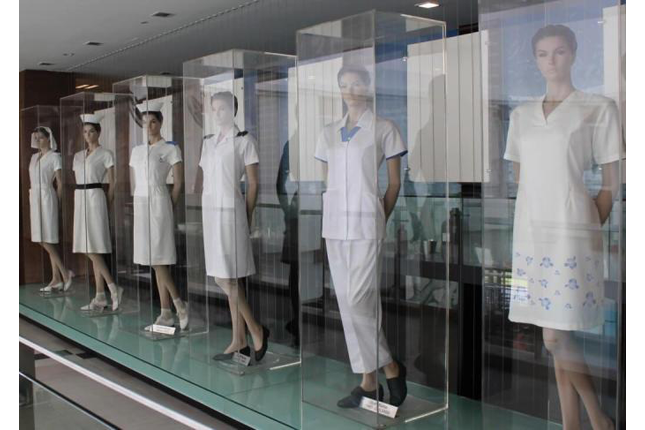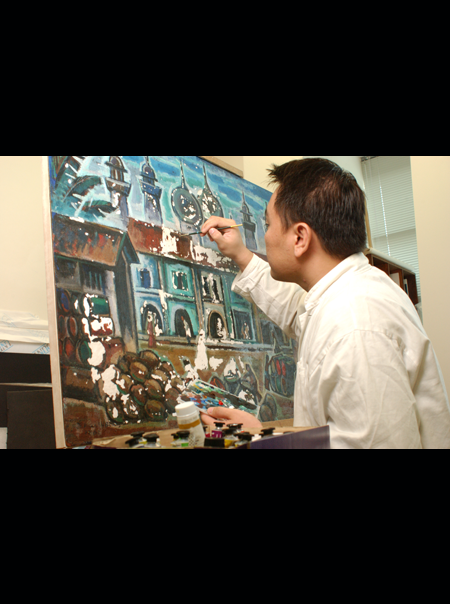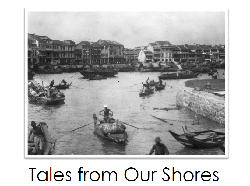MUSESG Volume 14 Issue 1 – July 2021
Text by Berta Manas Alcaide, Senior Conservator (Objects)
Read the full MUSE SG Vol 14. Issue 1
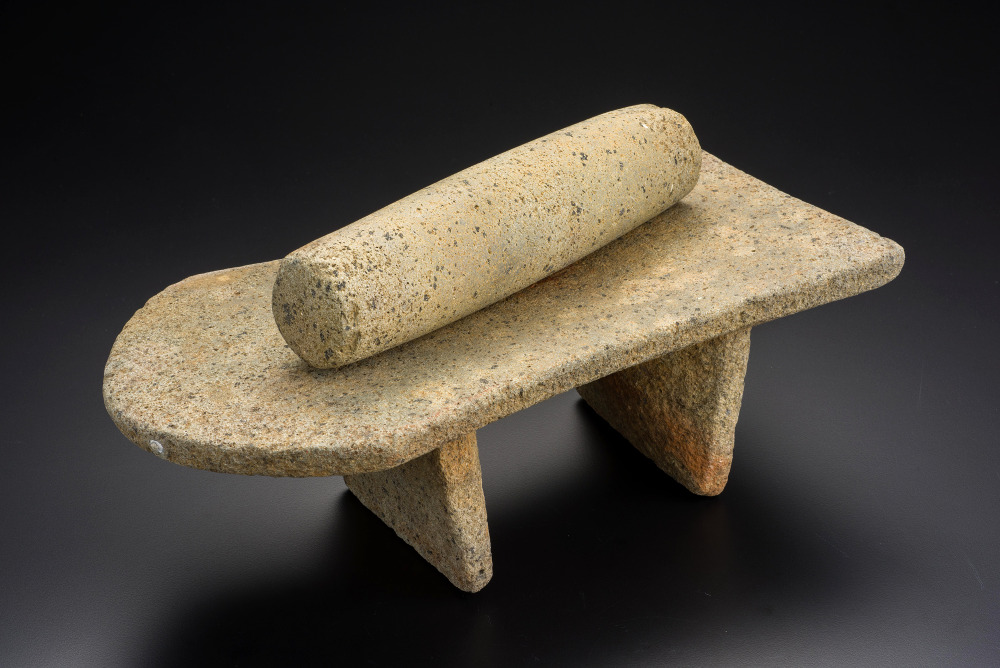 The grindstone and roller after the desalination treatment. They are believed to be from the Dvaravati culture (6–11th century) in central Thailand. Grindstone and Roller, possibly central Thailand, c.6-11thCentury, Collection of Asian Civilisation Museum
The grindstone and roller after the desalination treatment. They are believed to be from the Dvaravati culture (6–11th century) in central Thailand. Grindstone and Roller, possibly central Thailand, c.6-11thCentury, Collection of Asian Civilisation Museum
This grindstone and roller set is part of the Tang dynasty (618–907) cargo found in 1998 in a shipwreck off Belitung Island, Indonesia. The artefact was possibly from the Dvaravati culture (6–11th century) in central Thailand. This indicates that the ship likely made landfall at ports in this region during its voyage. It also suggests that some of the crew might be Southeast Asian in origin.
After spending more than a millennium underwater, a lot of salt had accumulated on the items. The Tang Cargo Collection, as it is known now, was desalinated in 2003 before being donated to the Asian Civilisations Museum in 2013.
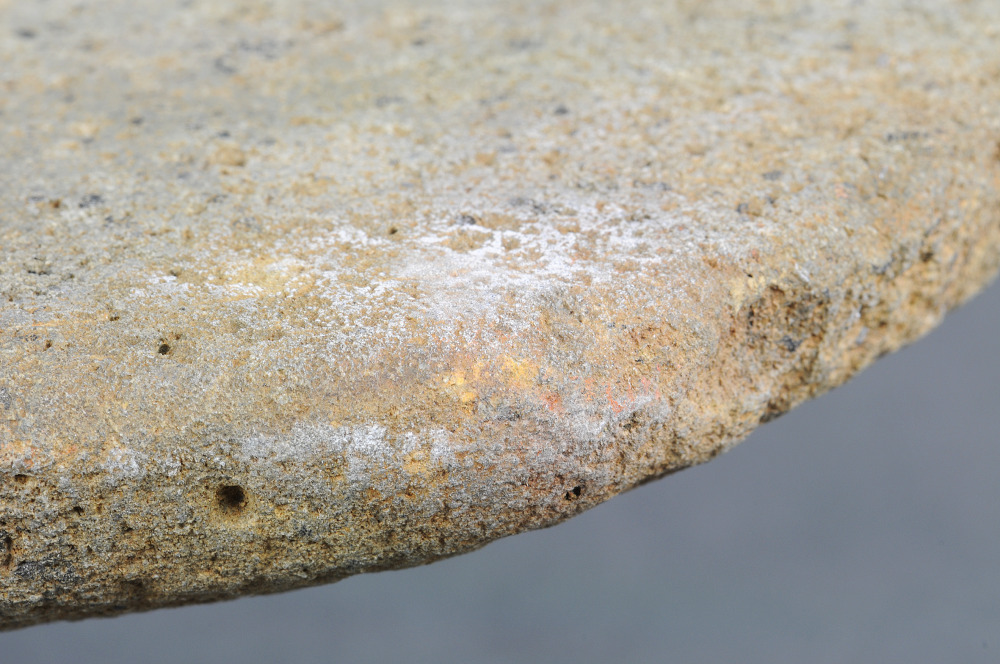 Detail of the white salts on the stone surface before the desalination treatment carried out in early 2021. Grindstone and Roller, possibly central Thailand, c.6-11th Century, Collection of Asian Civilisation Museum
Detail of the white salts on the stone surface before the desalination treatment carried out in early 2021. Grindstone and Roller, possibly central Thailand, c.6-11th Century, Collection of Asian Civilisation Museum
Despite the previous desalination treatment, however, soluble salts continued to crystallise, forming a distinctive white residue that was attached strongly to the stone surface. As the salts were visually distracting and the recurring salt crystallisation might lead to the disintegration of the stone, desalination was repeated in early 2021. Much like receiving a clay mask treatment, a wet paste was applied to the stone surface. As the paste dried, it absorbed the soluble salts close to the surface—a technique known as poulticing.
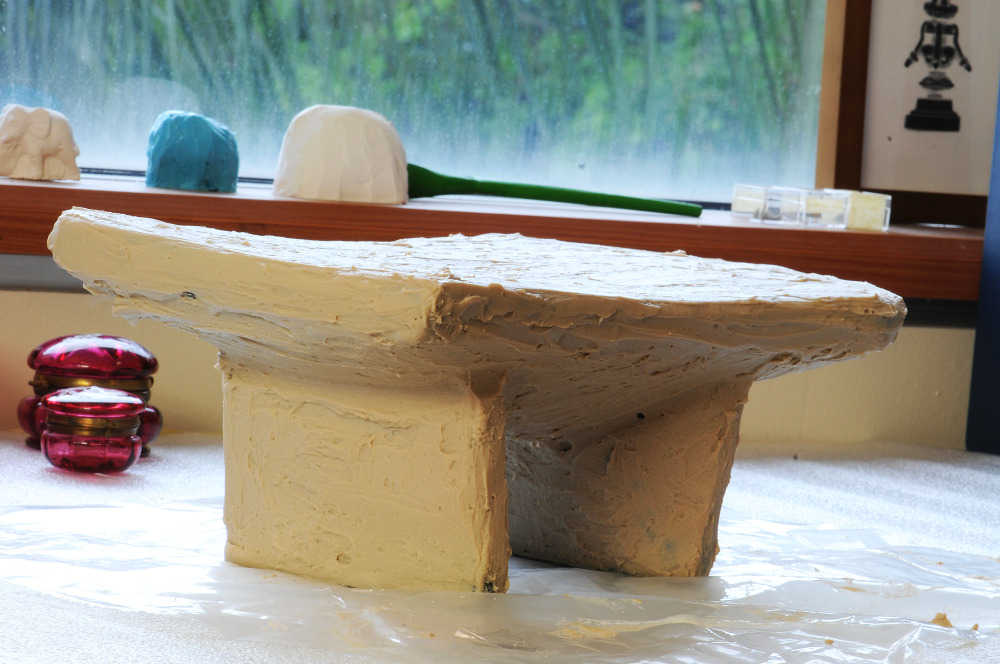 A wet paste was applied to the stone surface to draw out the salts—a technique known as poulticing. Grindstone and Roller, possibly central Thailand, c.6-11th Century, Collection of Asian Civilisation Museum
A wet paste was applied to the stone surface to draw out the salts—a technique known as poulticing. Grindstone and Roller, possibly central Thailand, c.6-11th Century, Collection of Asian Civilisation Museum
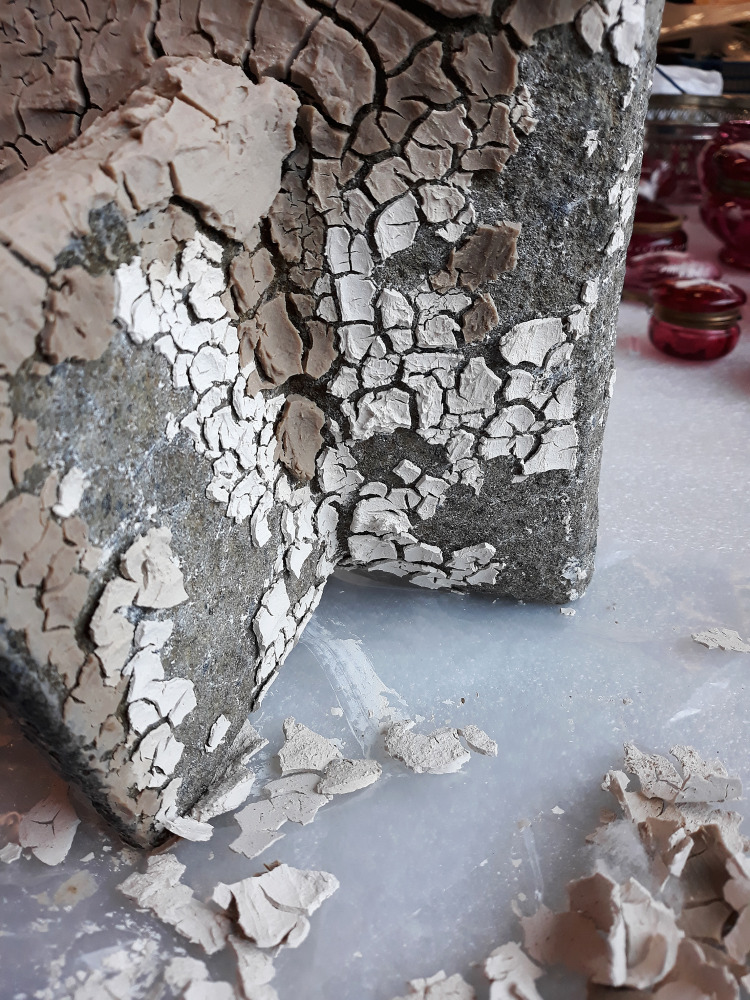 The paste drying up and detaching itself from the stone. Grindstone and Roller, possibly central Thailand, c.6-11th Century, Collection of Asian Civilisation Museum
The paste drying up and detaching itself from the stone. Grindstone and Roller, possibly central Thailand, c.6-11th Century, Collection of Asian Civilisation Museum
Desalination is a major topic of study for me, so I was very excited to work on the Tang Cargo Collection. The practical experience has been enlightening, continually challenging me to improve the desalination treatment of these artefacts.









